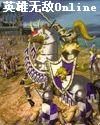on longevity and shortness of life-第2部分
按键盘上方向键 ← 或 → 可快速上下翻页,按键盘上的 Enter 键可回到本书目录页,按键盘上方向键 ↑ 可回到本页顶部!
————未阅读完?加入书签已便下次继续阅读!
nature causes death either by disease or naturally; for the potency of
the waste product works adversely and destroys now the entire
constitution; now a particular member。
This is why salacious animals and those abounding in seed age
quickly; the seed is a residue; and further; by being lost; it
produces dryness。 Hence the mule lives longer than either the horse or
the ass from which it sprang; and females live longer than males if
the males are salacious。 Accordingly cock…sparrows have a shorter life
than the females。 Again males subject to great toil are short…lived
and age more quickly owing to the labour; toil produces dryness and
old age is dry。 But by natural constitution and as a general rule
males live longer than females; and the reason is that the male is
an animal with more warmth than the female。
The same kind of animals are longer…lived in warm than in cold
climates for the same reason; on account of which they are of larger
size。 The size of animals of cold constitution illustrates this
particularly well; and hence snakes and lizards and scaly reptiles are
of great size in warm localities; as also are testacea in the Red Sea:
the warm humidity there is the cause equally of their augmented size
and of their life。 But in cold countries the humidity in animals is
more of a watery nature; and hence is readily congealed。
Consequently it happens that animals with little or no blood are in
northerly regions either entirely absent (both the land animals with
feet and the water creatures whose home is the sea) or; when they do
occur; they are smaller and have shorter life; for the frost
prevents growth。
Both plants and animals perish if not fed; for in that case they
consume themselves; just as a large flame consumes and burns up a
small one by using up its nutriment; so the natural warmth which is
the primary cause of digestion consumes the material in which it is
located。
Water animals have a shorter life than terrestrial creatures; not
strictly because they are humid; but because they are watery; and
watery moisture is easily destroyed; since it is cold and readily
congealed。 For the same reason bloodless animals perish readily unless
protected by great size; for there is neither fatness nor sweetness
about them。 In animals fat is sweet; and hence bees are longer…lived
than other animals of larger size。
6
It is amongst the plants that we find the longest life…more than
among the animals; for; in the first place; they are less watery and
hence less easily frozen。 Further they have an oiliness and a
viscosity which makes them retain their moisture in a form not
easily dried up; even though they are dry and earthy。
But we must discover the reason why trees are of an enduring
constitution; for it is peculiar to them and is not found in any
animals except the insects。
Plants continually renew themselves and hence last for a long
time。 New shoots continually come and the others grow old; and with
the roots the same thing happens。 But both processes do not occur
together。 Rather it happens that at one time the trunk and the
branches alone die and new ones grow up beside them; and it is only
when this has taken place that the fresh roots spring from the
surviving part。 Thus it continues; one part dying and the other
growing; and hence also it lives a long time。
There is a similarity; as has been already said; between plants
and insects; for they live; though divided; and two or more may be
derived from a single one。 Insects; however; though managing to
live; are not able to do so long; for they do not possess organs;
nor can the principle resident in each of the separated parts create
organs。 In the case of a plant; however; it can do so; every part of a
plant contains potentially both root and stem。 Hence it is from this
source that issues that continued growth when one part is renewed
and the other grows old; it is practically a case of longevity。 The
taking of slips furnishes a similar instance; for we might say that;
in a way; when we take a slip the same thing happens; the shoot cut
off is part of the plant。 Thus in taking slips this perpetuation of
life occurs though their connexion with the plant is severed; but in
the former case it is the continuity that is operative。 The reason
is that the life principle potentially belonging to them is present in
every part。
Identical phenomena are found both in plants and in animals。 For
in animals the males are; in general; the longer…lived。 They have
their upper parts larger than the lower (the male is more of the dwarf
type of build than the female); and it is in the upper part that
warmth resides; in the lower cold。 In plants also those with great
heads are longer…lived; and such are those that are not annual but
of the tree…type; for the roots are the head and upper part of a
plant; and among the annuals growth occurs in the direction of their
lower parts and the fruit。
These matters however will be specially investigated in the work
On Plants。 But this is our account of the reasons for the duration
of life and for short life in animals。 It remains for us to discuss
youth and age; and life and death。 To come to a definite understanding
about these matters would complete our course of study on animals。
…THE END…
。






